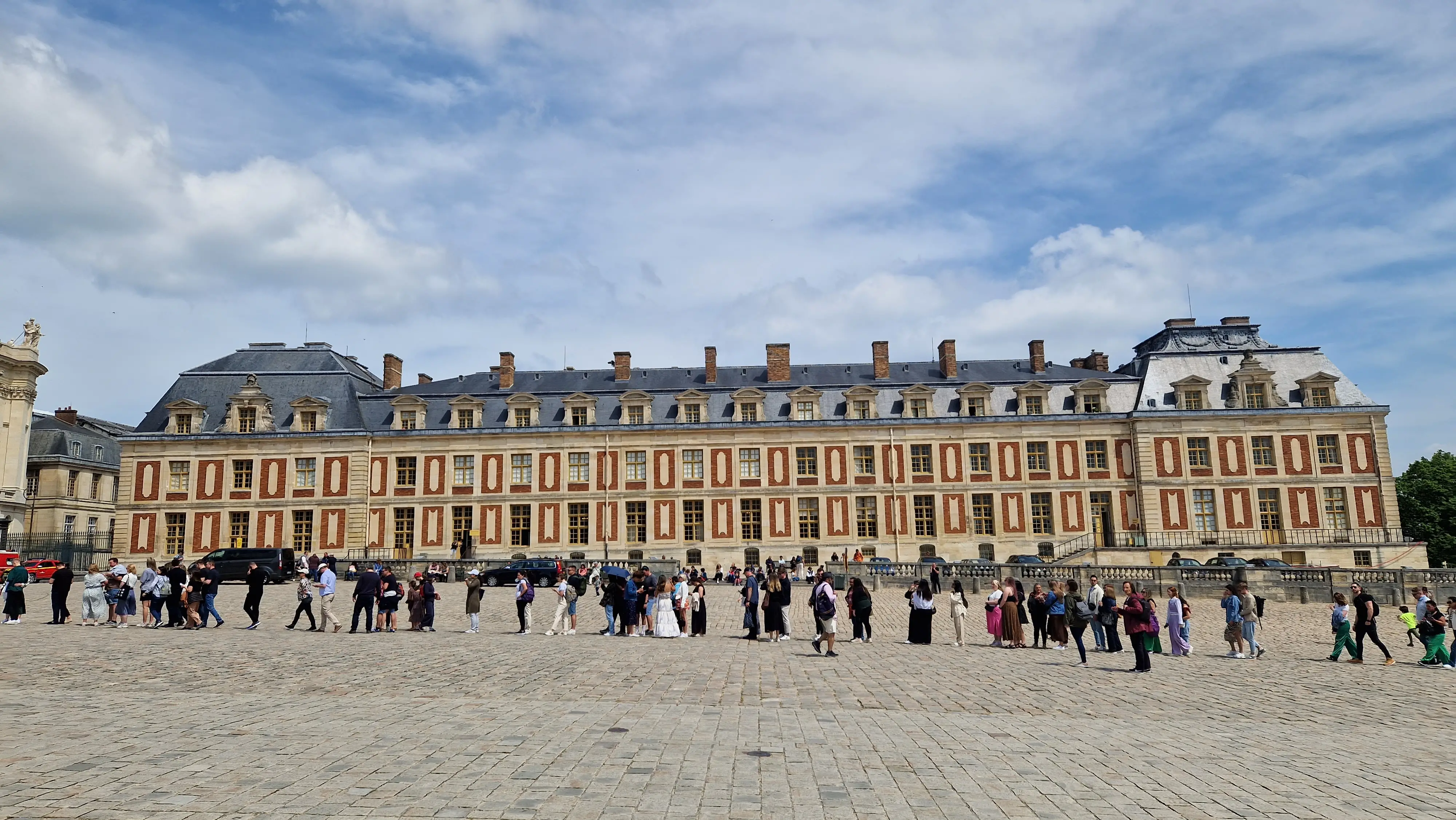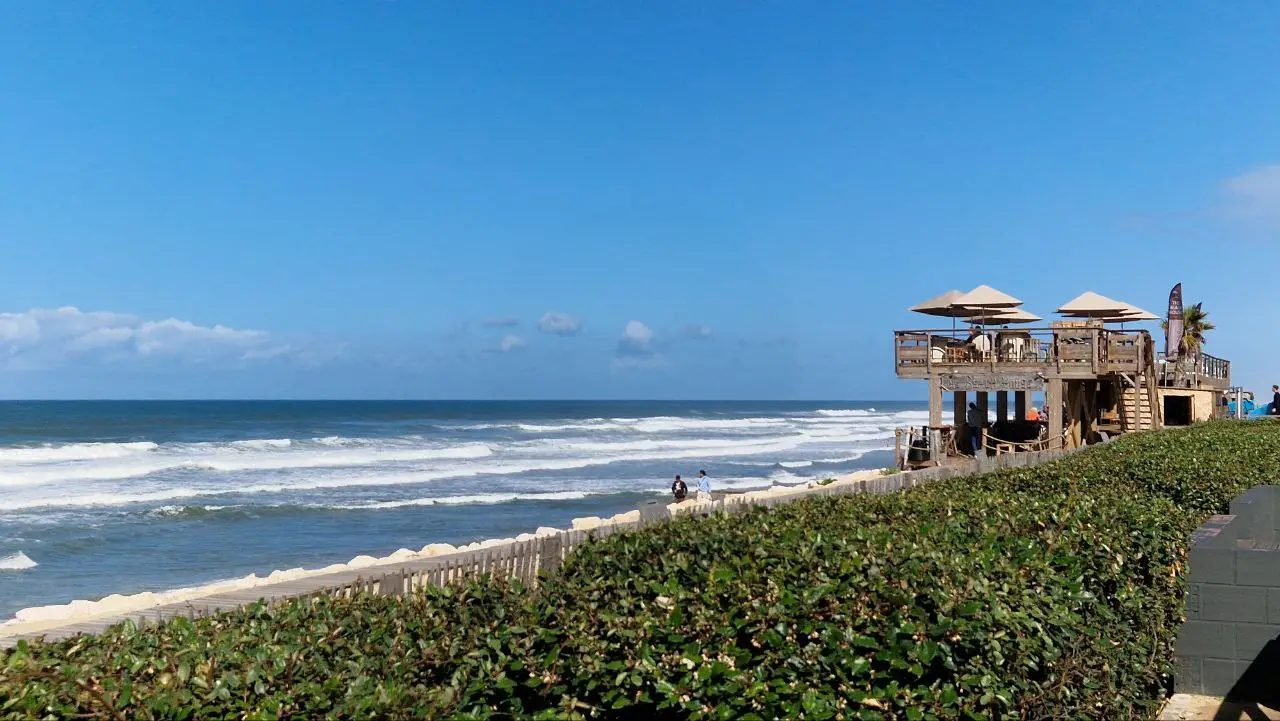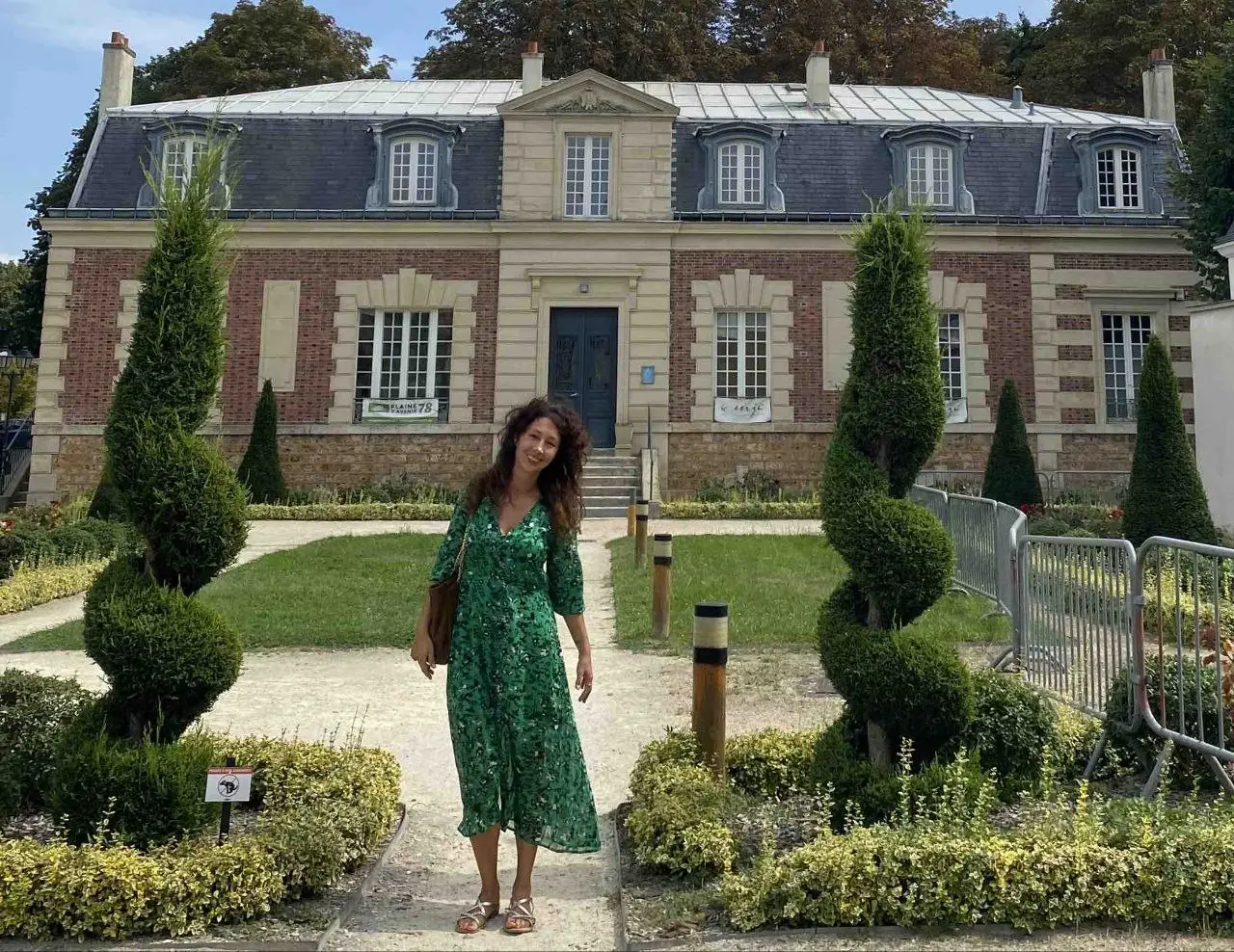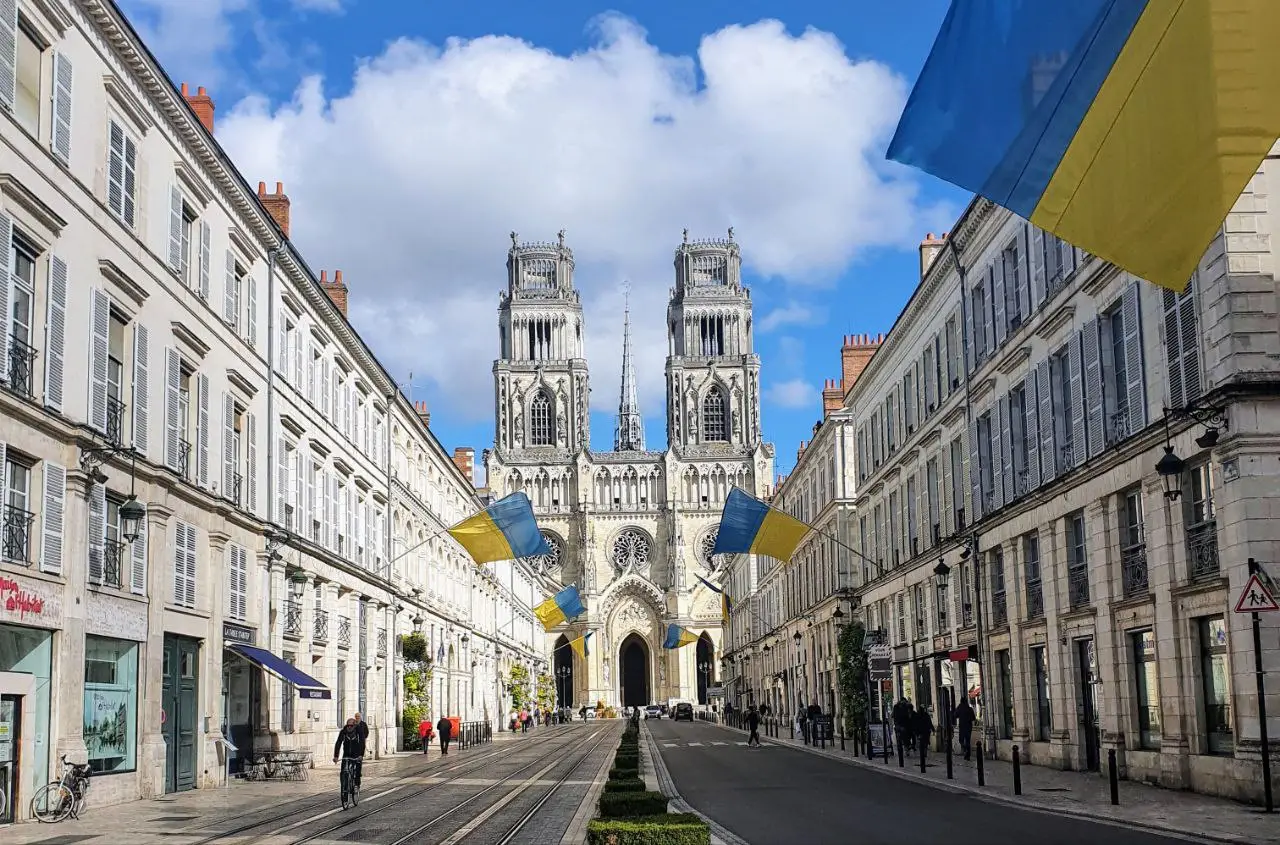Colored crystal: the bright world of antiques in the flea markets of France
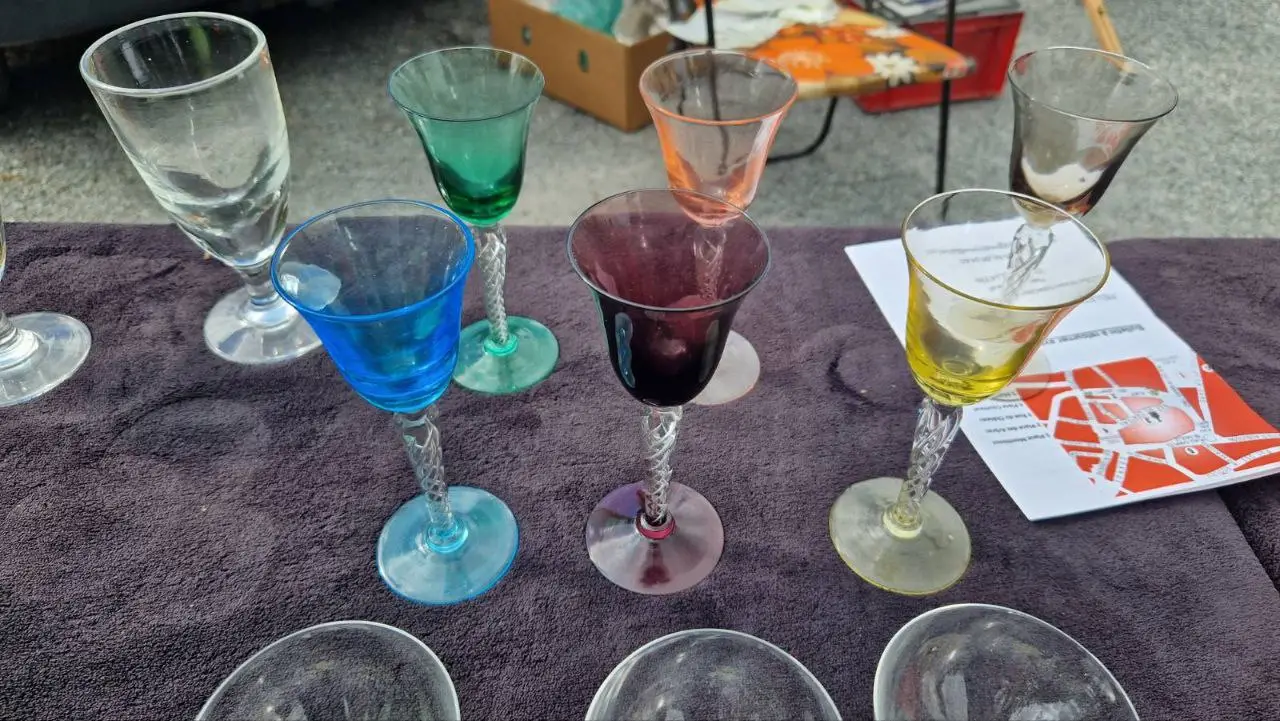
For many crystal collectors and connoisseurs, every piece they find has a special meaning and story. Visiting flea markets in France becomes a real adventure, where each item can open a new page in the world of art and beauty
France has always been known for its love of art, fashion and elegance. One of the manifestations of this aesthetic culture is colored crystal, which can be found in the country's many flea markets. These works of art, which shine in all the colors of the rainbow, are a true treasure for collectors and antique lovers.
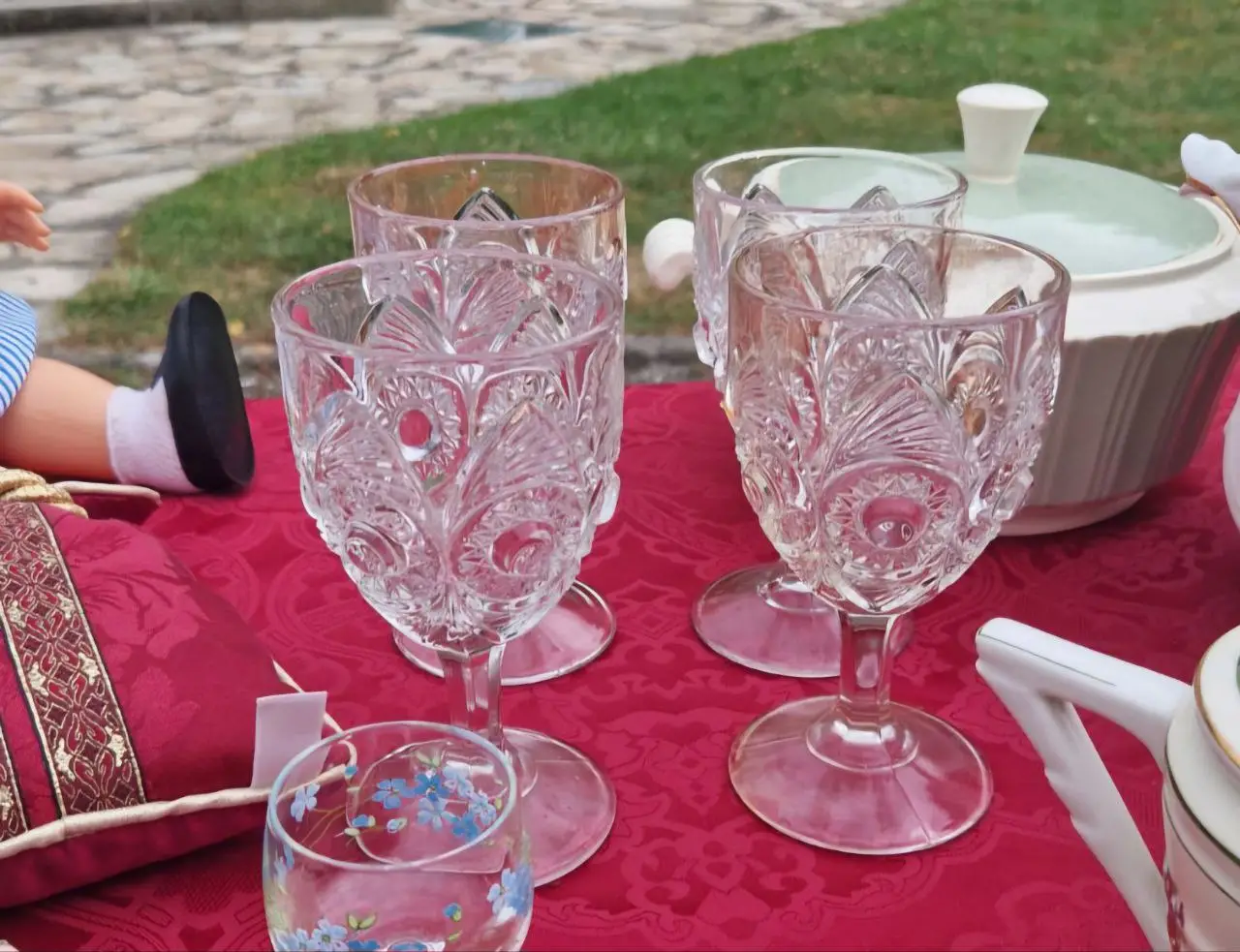
Colored crystal, often referred to as "Bohemian glass," has a long history. The production of colored glass dates back to ancient times, but this technology flourished in Europe in the 18th and 19th centuries. In particular, Bohemia (modern-day Czech Republic) became known for its craftsmen who created high-quality colored crystal products. French craftsmen, inspired by the success of their Bohemian counterparts, also began experimenting with colored crystal.
History of Colored Crystal in France
Crystal is known for its ability to transmit and refract light, creating an unsurpassed brilliance and play of colors. The blue, green, red, and yellow colors of crystal quickly gained popularity among European aristocrats and later spread around the world.
France has always been at the forefront of crystal production. Regions such as Lorraine became centers of production due to the rich deposits of sand needed for glassmaking.
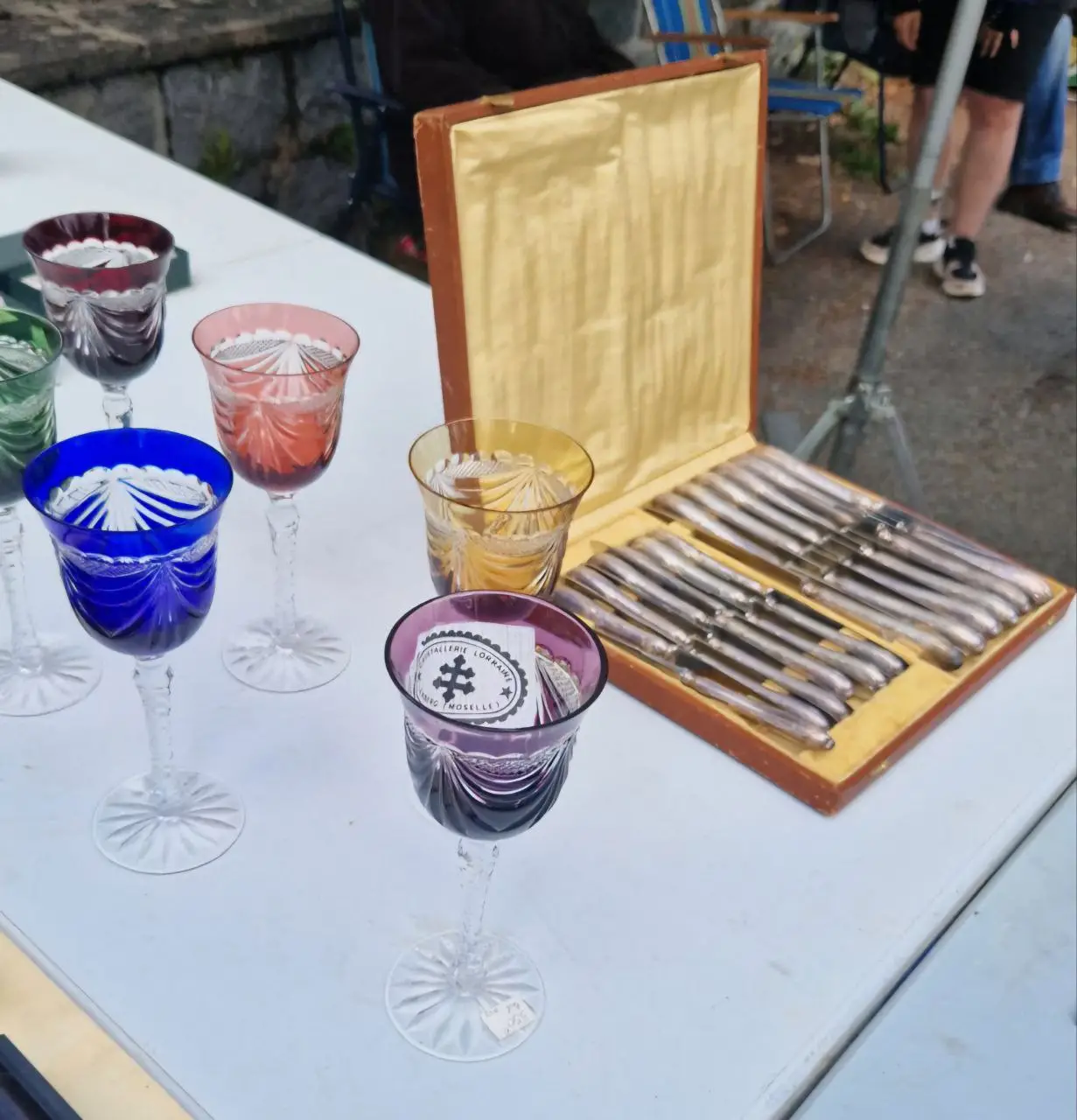
Colored crystal production in France began in the 18th century. Famous French manufactories, such as Baccarat, Saint-Louis and Lalique, became leaders in the production of crystal. These companies used special techniques and the addition of metal oxides to create a variety of colors. For example, cobalt oxide created blue, gold oxide created red, and copper oxide created green.
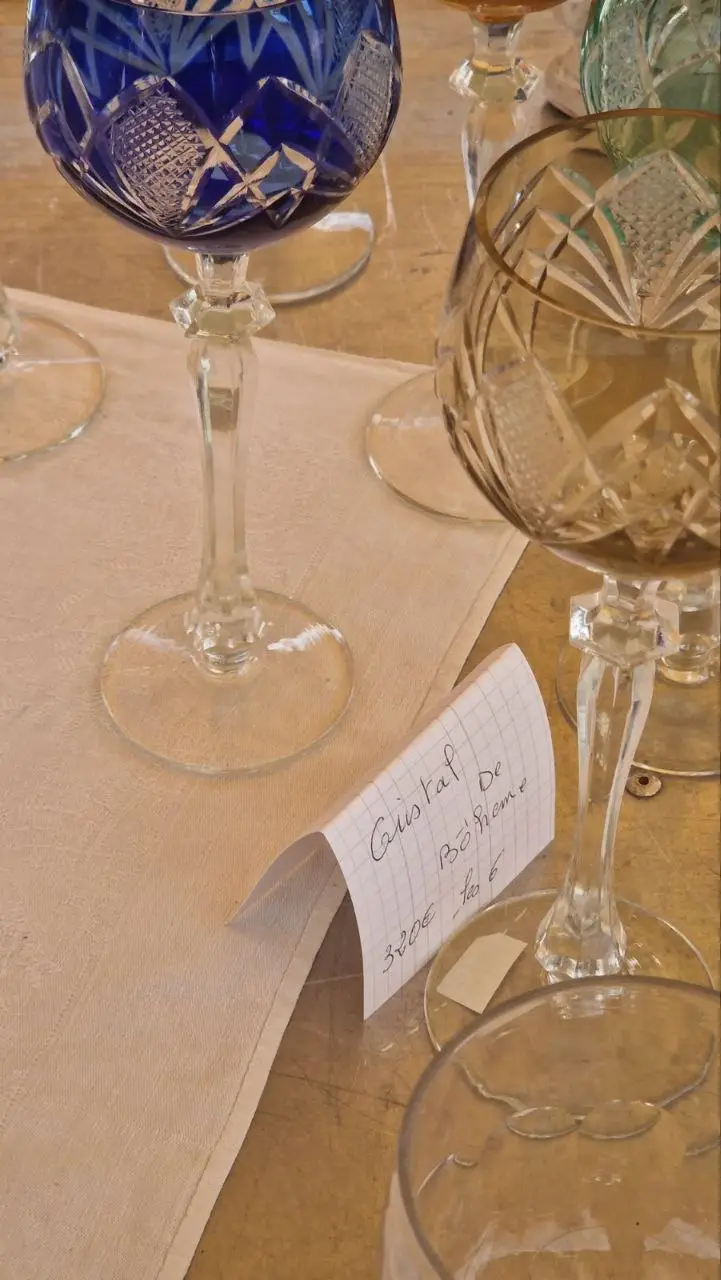
Baccarat, founded in 1764, quickly became famous for its high-quality crystal. Saint-Louis, founded even earlier in 1586, is the oldest glass-blowing manufactory in France, which later switched to the production of colored crystal. René Lalique, who founded his company in 1888, influenced the art of crystal with his unique style, combining crystal with other materials such as enamel and metals.
Flea markets in France: living museums in the open air
France is famous for its flea markets, which are real open-air museums.
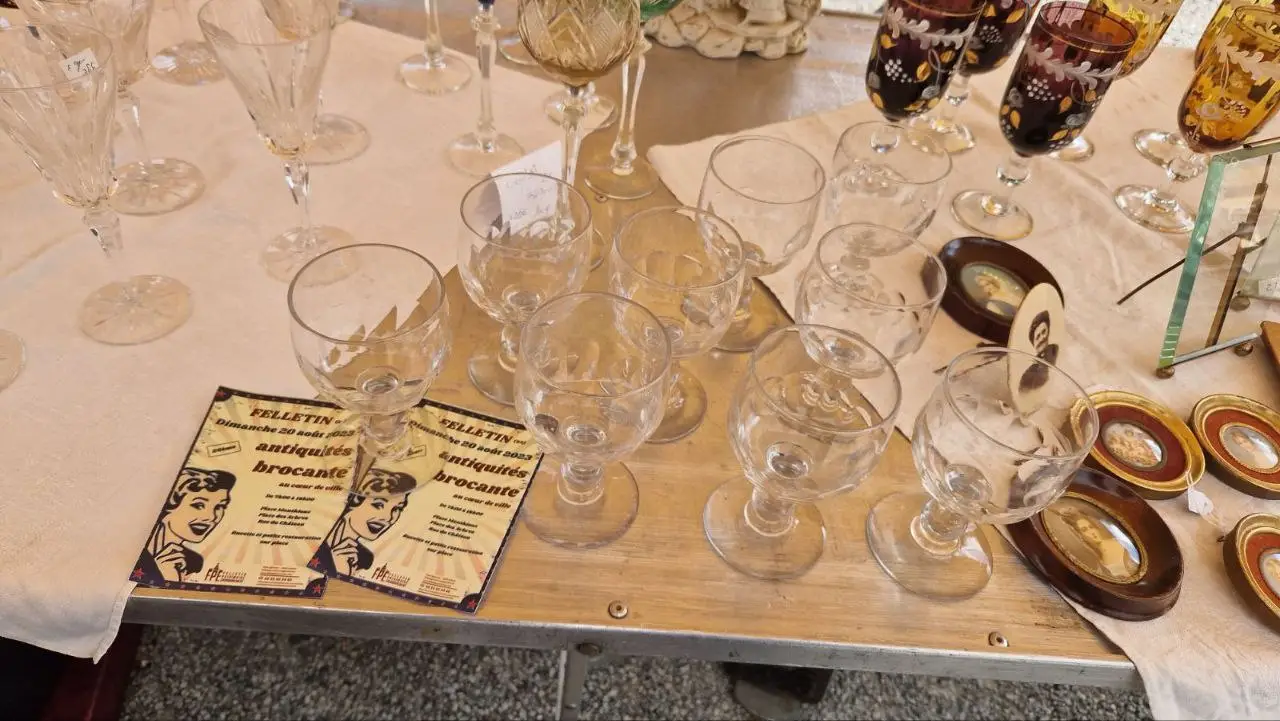
Flea markets offer a wide range of goods: from antiques and vintage clothing to old books and art objects. However, for collectors and crystal lovers, these markets are a real treasure trove. Walking through the rows of vendors, you can come across amazing colored crystal pieces that once adorned palaces and homes of the aristocracy.
How to recognize genuine colored crystal?
There are several important signs to know in order to find genuine colored crystal at flea markets. First, quality crystal has a characteristic shine and weight. If you hold the crystal in your hands, it should be heavier than ordinary glass. Secondly, pay attention to the shade of color: real colored crystal has a rich and uniform color, without bubbles and cloudiness.
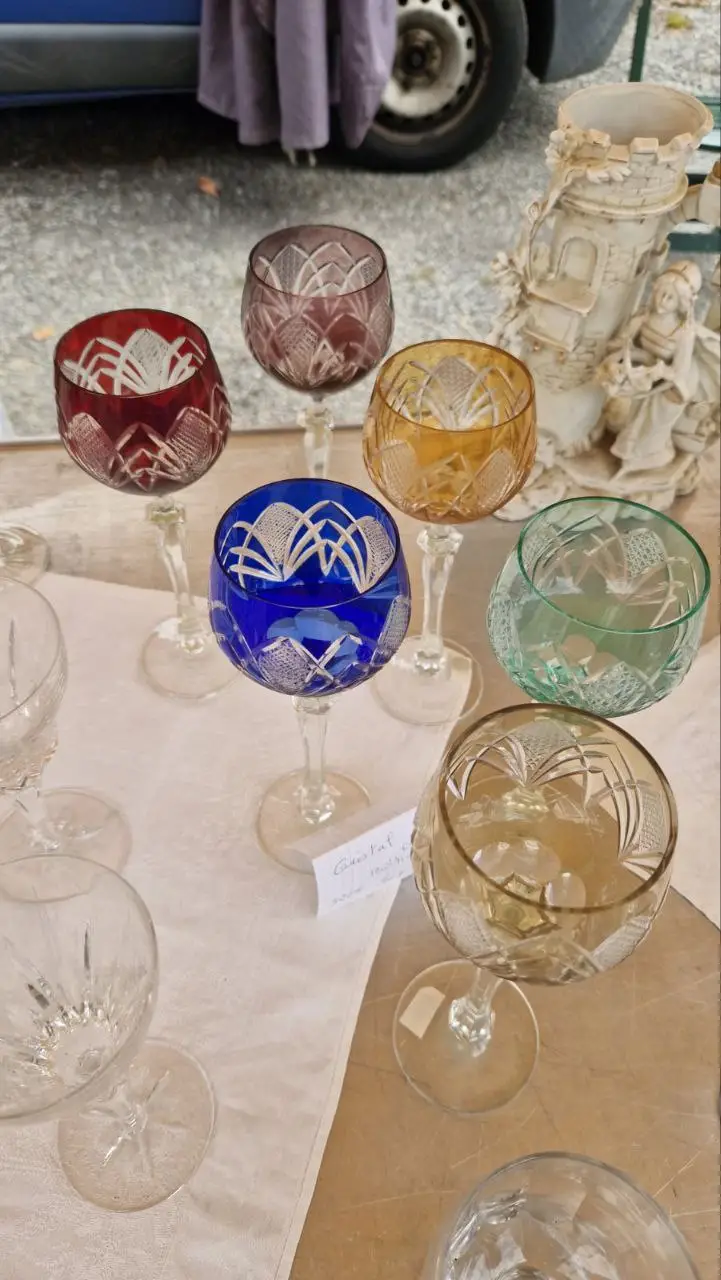
You should also pay attention to the craftsmanship. Genuine crystal products have clear, graceful lines and intricate patterns. If the product has a signature or a manufacturer's mark, this may indicate its authenticity. Famous manufacturers such as Baccarat, Lalique, and Saint-Louis leave their marks on each piece, making them easily recognizable.
Visiting flea markets: practical tips
Flea markets in France, or "brocante", are real cultural institutions. They originated in the XIX century and eventually became a meeting place for antique lovers, collectors, and just curious people. Each market has its own unique character, but they are all united by a common goal — to give a second life to antiques.
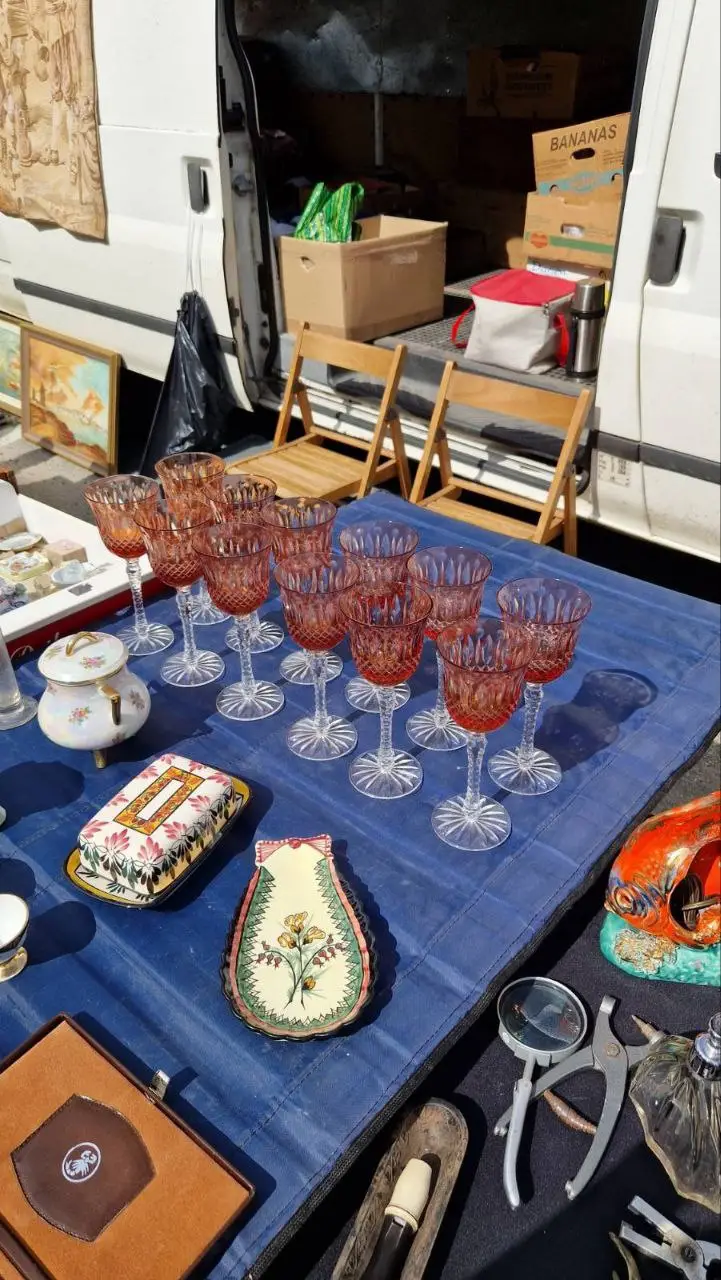
In order to successfully find and purchase colored crystal at a flea market, you should follow some tips:
- Early Arrival
The best items are often sold early in the day, so you should arrive as early as possible. Some start as early as 7.30 am, and you don't have to leave after 12:00 am.
- Negotiating
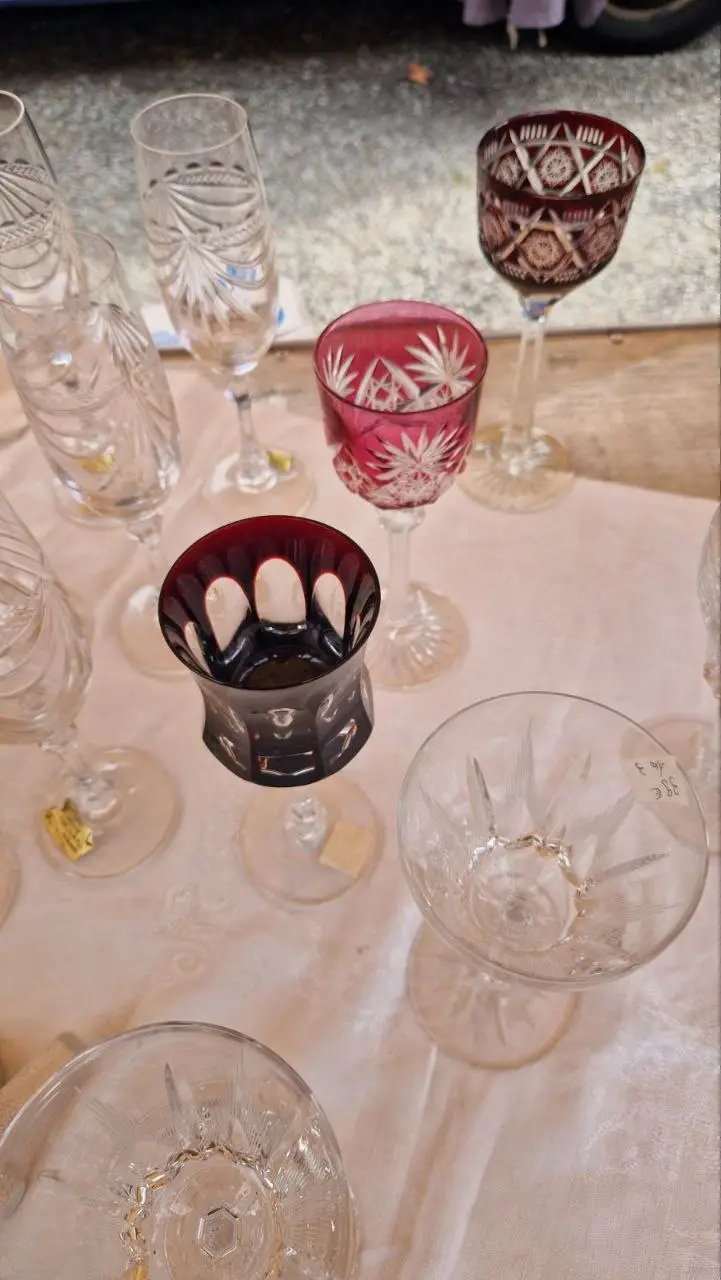
Don't be afraid to bargain. Sellers usually expect buyers to lower the price and are ready to negotiate. But the French know the price of crystal and only transparent crystal can be bought cheaply, literally for a few euros per glass, while colored crystal will cost from 180 euros for a set of 6 glasses, although some collectors sell individually for 40–60 euros per glass of a well-known brand.
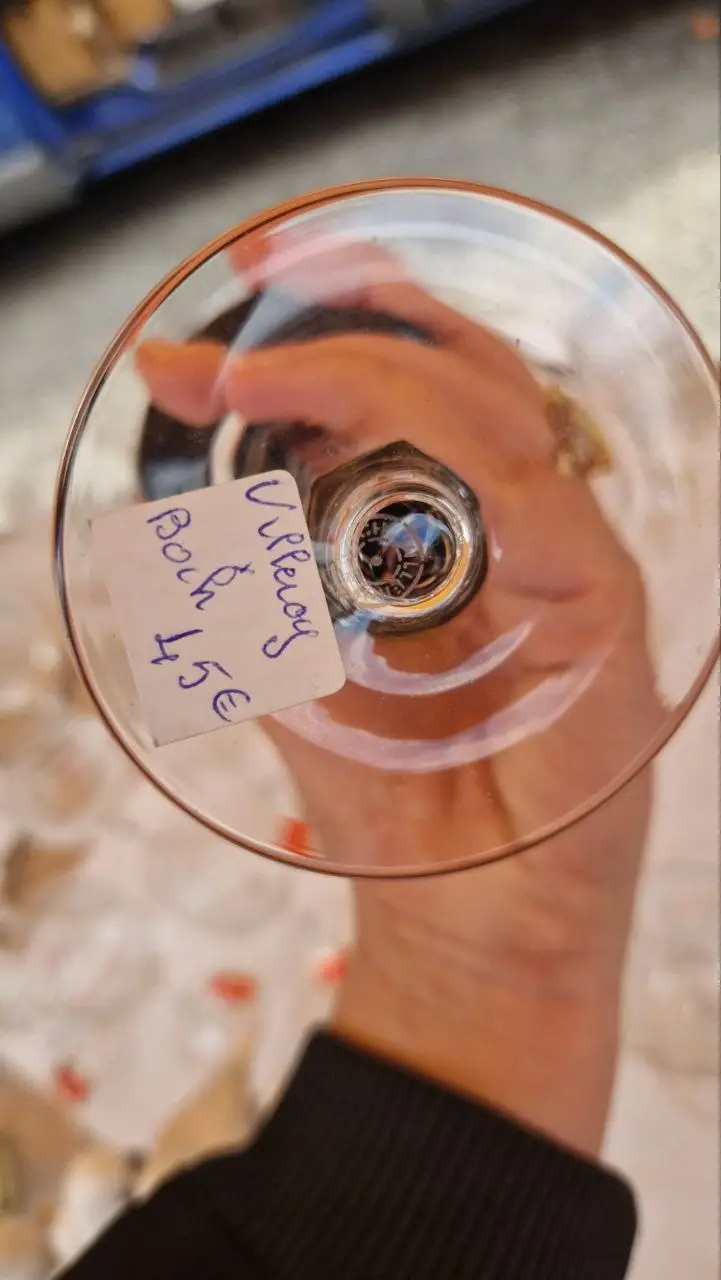
- Careful Inspection
Before buying, carefully inspect the product for cracks, chips, and other defects. These flaws can significantly affect the value and authenticity of the item.
- Research
Learn about the most famous manufacturers and their characteristic features in advance. This will help you to distinguish real masterpieces from fakes.
Whether you're a seasoned collector or just a lover of fine art, French flea markets offer unforgettable moments and the chance to find real works of art. For example, at flea markets you can find crystal glasses used at royal receptions or vases that adorned the homes of famous writers and artists.
- Types of crystal
A variety of colored crystal can be found at flea markets. Among the most common are:
Goblets and glasses — these items are in great demand among collectors. They can be made in different styles: from classic to modern.
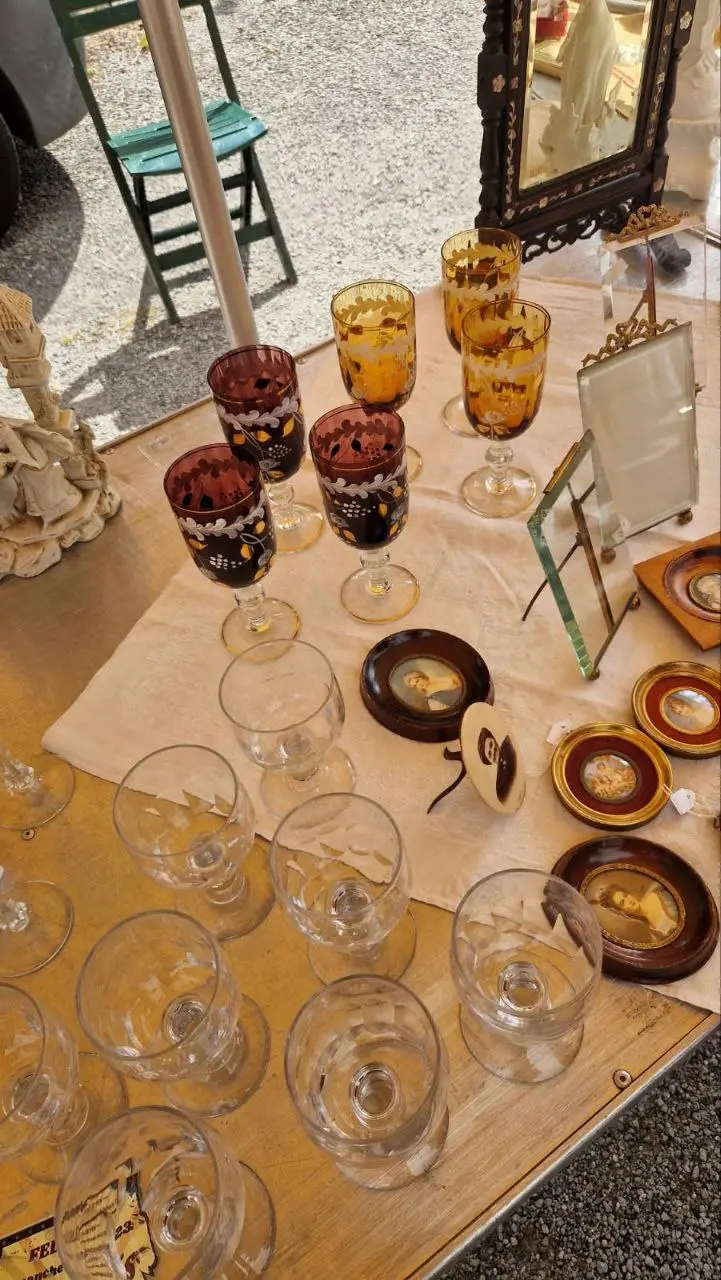
Vases and decanters — often decorated with intricate ornaments and engraving, they are real works of art.
Lamps and chandeliers — these items add luxury and elegance to any interior.
Jewelry — rings, bracelets and necklaces made of colored crystal are a great addition to any look.
Influence of crystal on modern design
Crystal remains popular among modern interior designers, who use it to create luxurious and sophisticated spaces. Many contemporary designers are inspired by antique pieces, adding them to their projects to create an atmosphere of elegance and luxury.
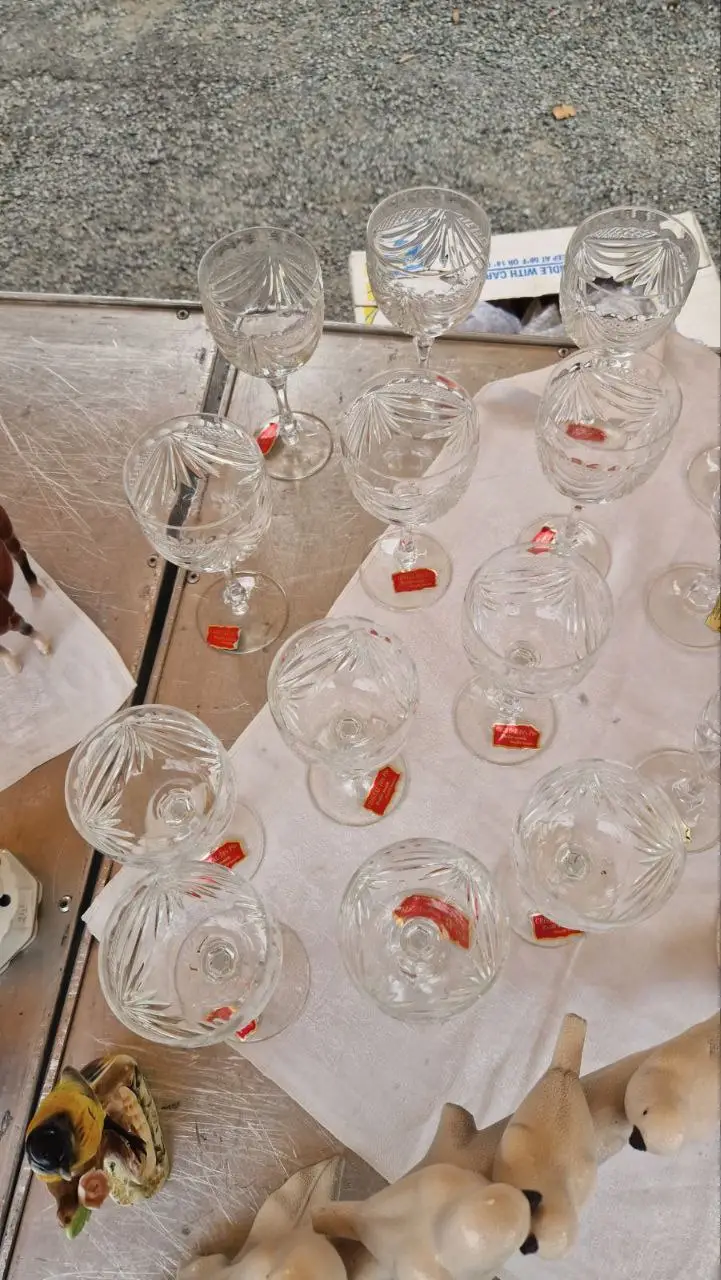
Modern manufacturers are also not standing aside, experimenting with new technologies and materials to create crystal that meets the requirements of the present. For example, Baccarat continues to produce exclusive collections using traditional production methods combined with modern trends.
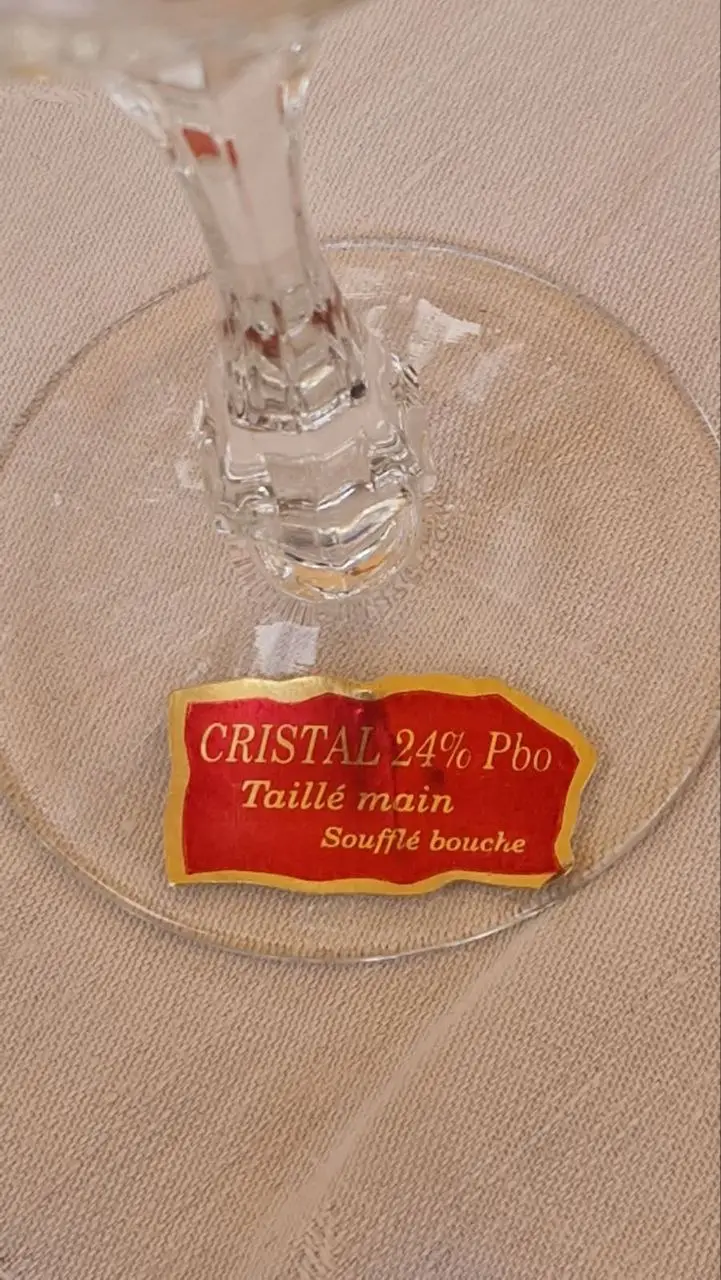
Crystal is an important part of the French cultural heritage. Items made of it found at flea markets can be a real treasure for collectors. The markets offer a unique opportunity to find rare and valuable items of historical and aesthetic value. Knowing the history, production techniques and characteristics of colored crystal will help you make a good choice and enjoy the beauty and sophistication of these works of art.

